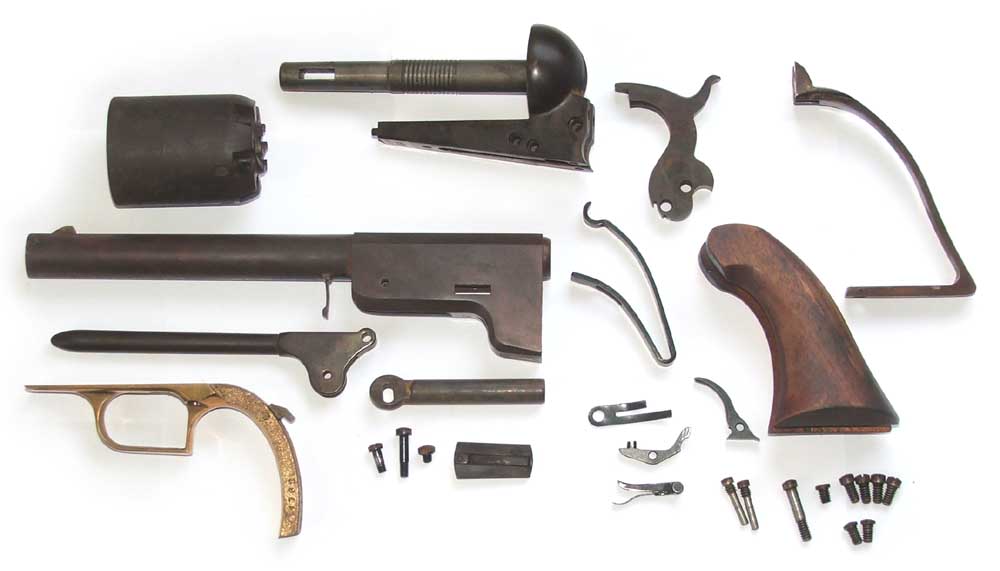Browning with Plum Brown & two left hands
All unassembled Walker parts after browning. Just the visible parts are browned.
The results are fair, not perfect. Most is due to my own two left hands probably. In my own defence... it was the first time I done something like this.
The frame, barrel and cylinder do not have the identical color. The barrel is actually a bit reddish where the patina coat turned out a bit thin.
I used a sponge when applying the Plum Brown. Tapping the parts does not work great.
Think it is better to stroke the parts with the sponge, and making sure the Plum Brown does not start to drip down the parts.
You will get (I don't know the English word) 'drippers' which will show afterwards. Check out photo above and you can see where the plum brown ran down the barrel. What happened here is still a bit showing on the barrel although I treated it once more.
The grips went better. I sanded most, but not all, laquer off.
Made a few dings in it to help make it look older.
Used a flame which gave dark spots. Then tried old motor oil, grease from my motorcycle chain and sweat from my head.
Then I got a bright idea. Something to charisch since it does not happen often, and bought dark brown shoe polish.
Put on a thick layer of the shoepolish and burned over it with a propane torch. Then once more, and you see the result.
The shoepolish result does not show on the Walker photo's on top of this post. Shoepolish idea came to me later.
Very happy with the results on the wood. Less on the gun itself.
Anyhow, from a distance it looks more antique then it did before














